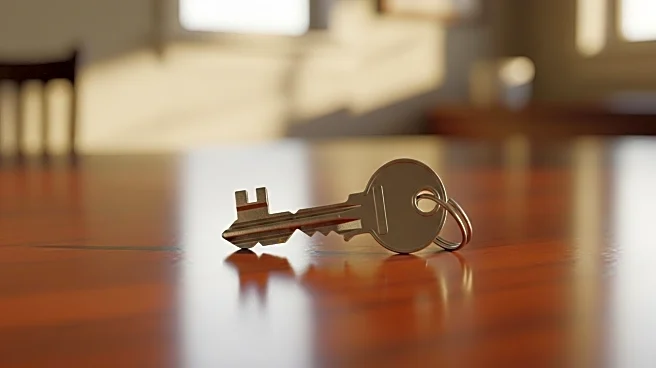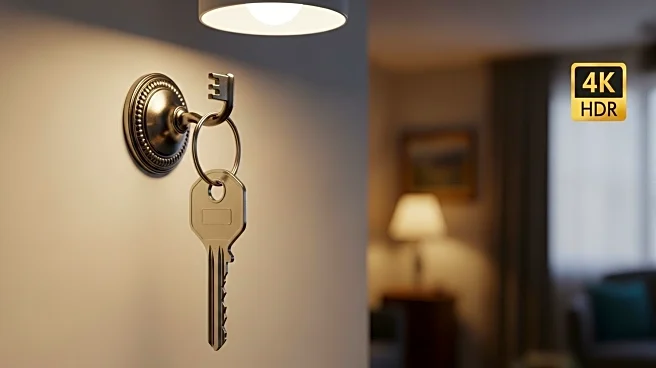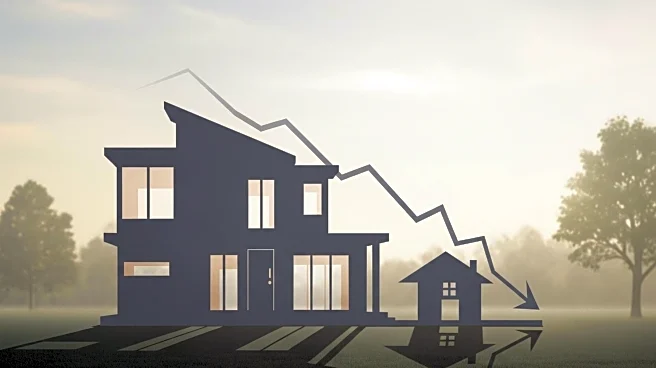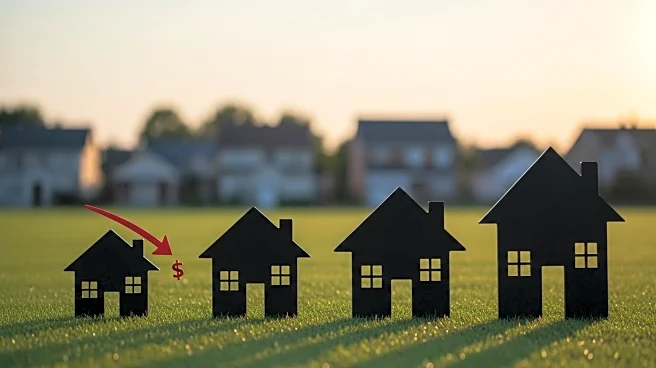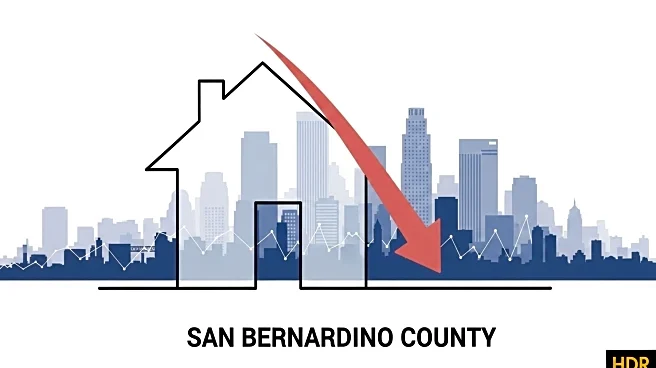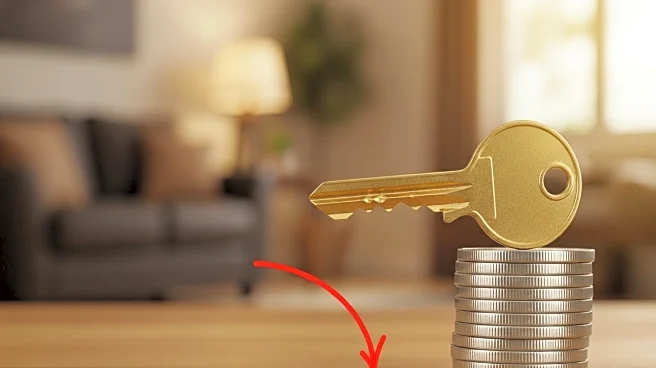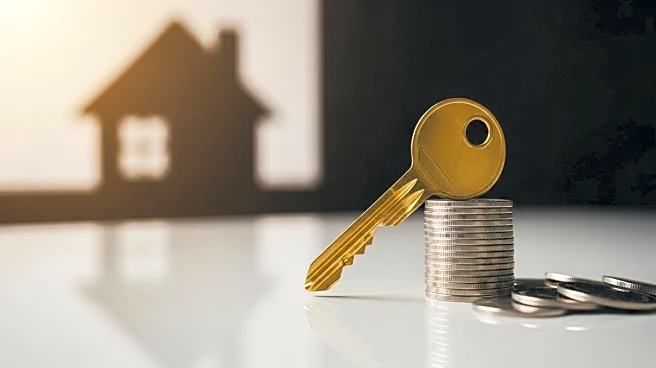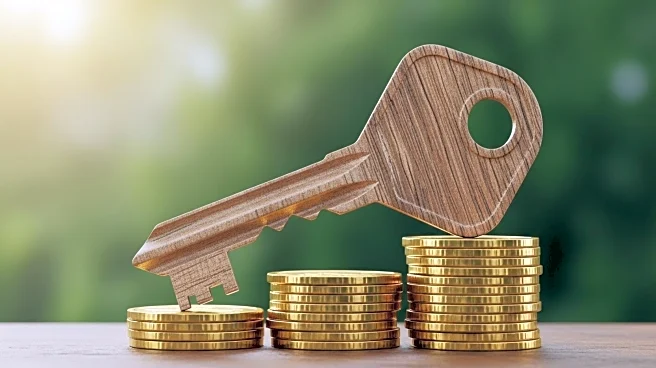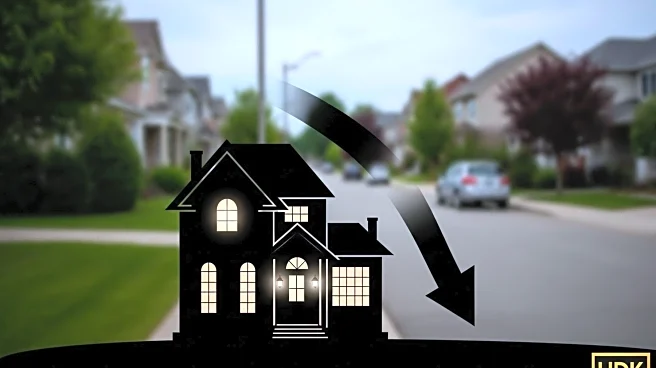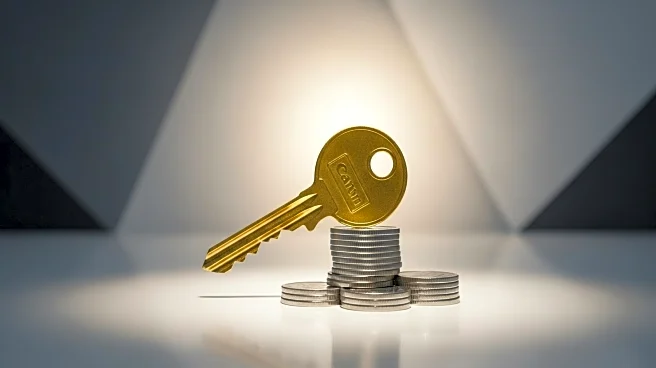What's Happening?
Andrew Fortune, a realtor and brokerage owner at Great Colorado Homes, has advised homeowners to consider waiting until 2026 to sell their homes due to current high mortgage rates. According to Fortune, many homeowners are locked into pandemic-era mortgage rates around 3%, while current rates hover between 6.5% and 7%. This significant increase in rates means that homeowners with a $400,000 mortgage would pay an additional $200 monthly if they were to refinance now, resulting in $2,400 more in annual interest payments. Fortune suggests that waiting until 2026 could be beneficial as experts predict rates may drop below 6% by then, potentially saving homeowners from higher interest costs on new mortgages.
Why It's Important?
The advice to wait until 2026 to sell homes is significant for homeowners who are currently locked into lower mortgage rates. Selling now could result in higher monthly payments due to increased interest rates, which may not be financially feasible for many. By waiting, homeowners could benefit from lower rates, increasing affordability and potentially boosting buyer demand. This could lead to higher home values and more competitive market conditions, allowing sellers to achieve better sale prices. The broader impact on the housing market includes potential shifts in buyer behavior and market dynamics, as more buyers may enter the market when rates decrease.
What's Next?
Homeowners are encouraged to consider strategic home improvements while waiting for mortgage rates to decrease. Enhancements such as flooring upgrades or roof renovations could increase the home's value and appeal to buyers when the market conditions improve. Additionally, the housing market may experience increased competition among buyers once rates drop, potentially leading to bidding wars and higher sale prices. Real estate agents and homeowners will likely monitor economic indicators and interest rate forecasts closely to time their selling decisions optimally.
Beyond the Headlines
The current situation highlights the psychological and economic factors influencing homeowner decisions. The lock-in effect, where homeowners are reluctant to sell due to favorable existing mortgage rates, underscores the importance of timing in real estate transactions. As the market evolves, the balance between buyers and sellers may stabilize, offering a more predictable environment for transactions. This period also provides homeowners with an opportunity to enhance their properties, potentially increasing their market value when conditions become favorable.
